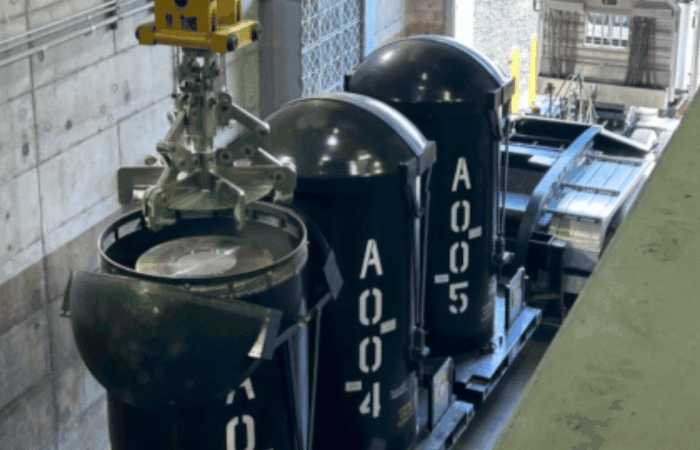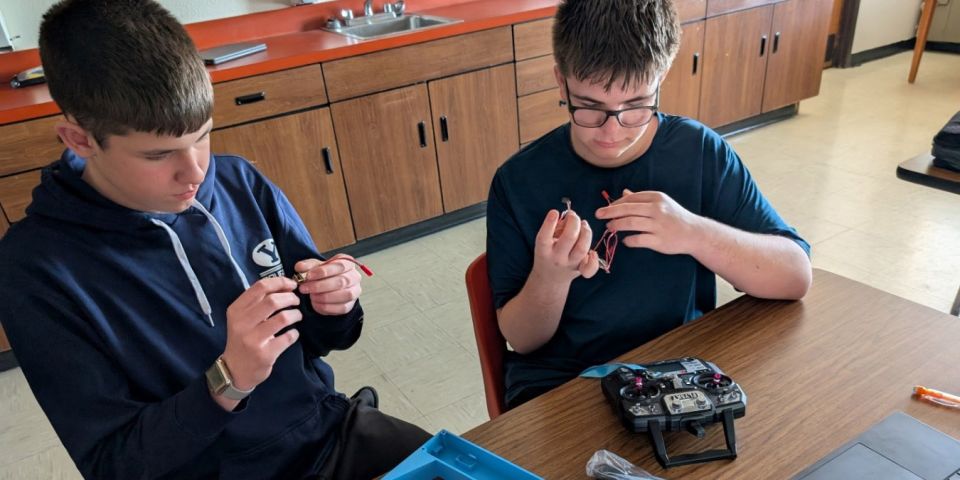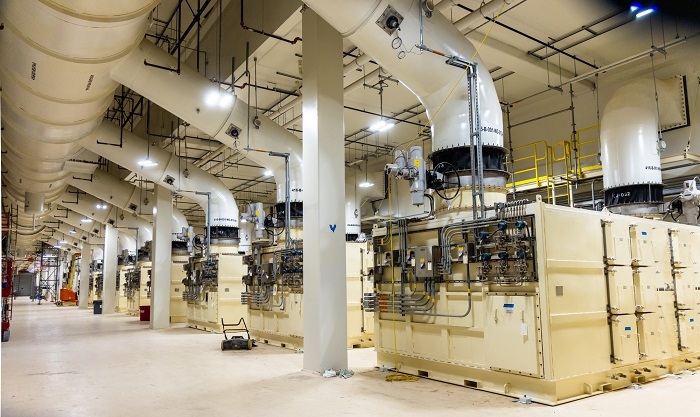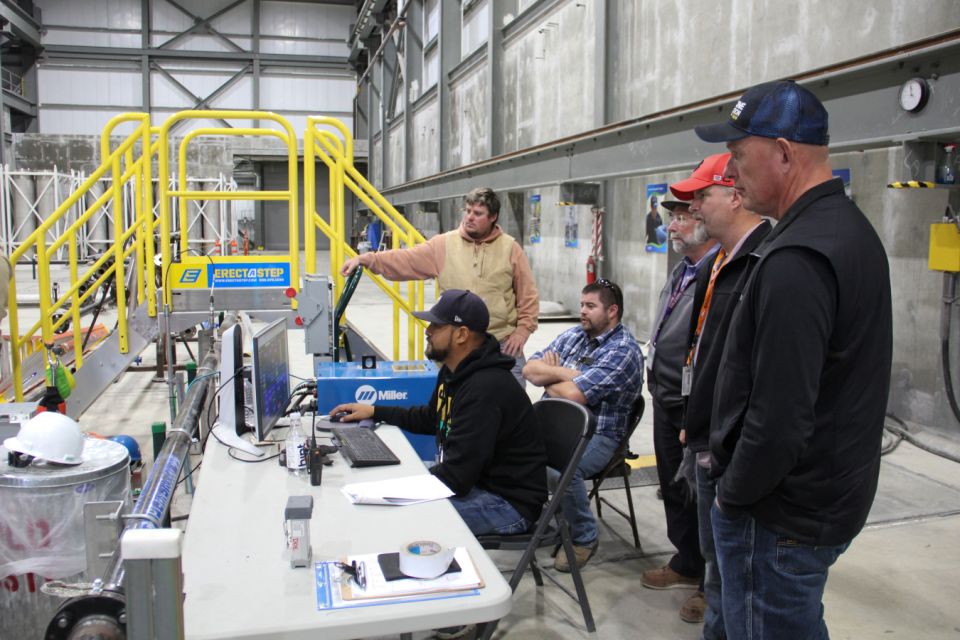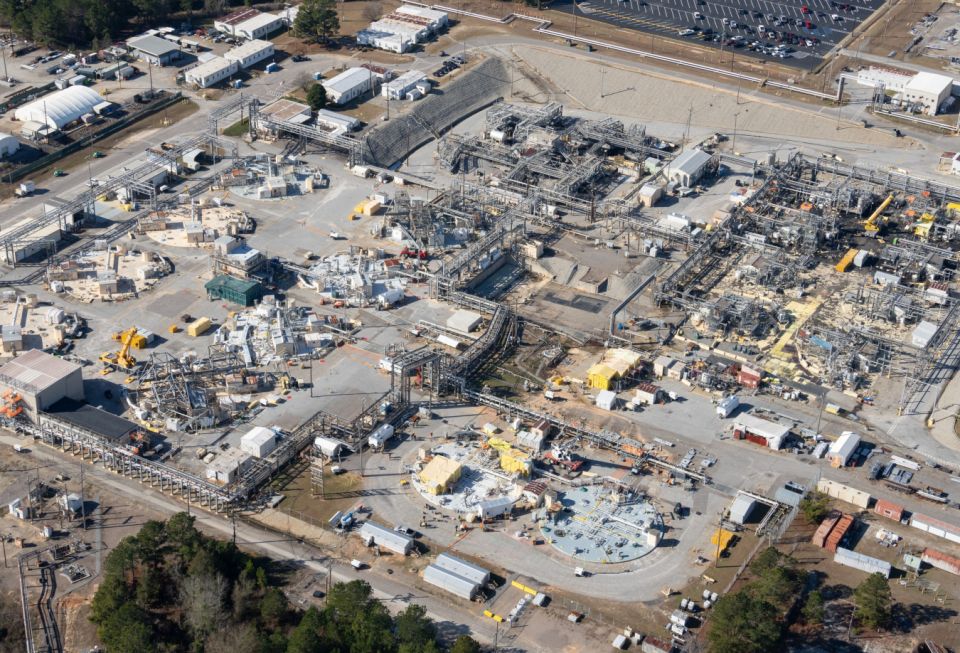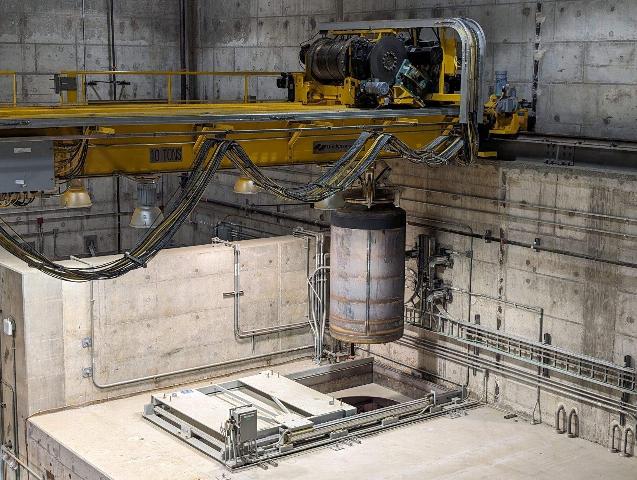Hanford workers recently transferred three containers of nonradioactive test glass from the site’s WTP to the nearby Integrated Disposal Facility. (Photos: DOE)
According to the Department of Energy’s Office of Environmental Management, two contractors at its Hanford Site in Washington state have finished a first-time relay of test glass as the site prepares to vitrify—or immobilize in glass—millions of gallons of radioactive and chemical waste from its large underground tanks.
Video: Watch an “instant replay” of the test glass relay here.
At the beginning: Workers with Bechtel National started the relay by loading large containers of nonradioactive test glass on a specially designed trailer at Hanford’s Low-Activity Waste Facility in the Waste Treatment and Immobilization Plant (WTP). The containers were taken to a nearby staging area, where Central Plateau Cleanup Company took the baton and drove the containers to the site’s Integrated Disposal Facility.
Mat Irwin, DOE-EM’s acting assistant manager for the WTP project, noted that the training runs using test glass are important qualifiers for the One Hanford team. The One Hanford team is made up of two DOE offices (the Richland Operations Office and the Office of River Protection) and six prime contractors.
“Moving the containers allowed the contractors to practice the transfer process and provided the disposal facility with containers for additional training,” Irwin said. “The relays move at the deliberate and methodical pace required in our work to protect people and the environment.”
Cold commissioning: The test glass in the containers was poured from one of the 300-ton melters in the treatment plant’s Low-Activity Waste (LAW) Facility that will vitrify tank waste as part of the DOE’s Direct-Feed Low-Activity Waste program, in which low-activity tank waste is treated and vitrified.
The DOE was to begin cold commissioning of the LAW Facility on August 1 as part of an agreement with the state of Washington. In June, however, the DOE informed the Washington State Department of Ecology that because of “unforeseen technical obstacles” with the facility, a “modest” four-month extension would be needed, with cold commissioning beginning November 29.
Next steps: After using containers of test glass for training at the disposal facility, Hanford will send them to a hazardous waste landfill in Oregon for disposal.
When operations begin vitrifying low-activity tank waste, contractors will relay more than 200,000 containers of waste immobilized in glass from the treatment plant to safe disposal in Hanford’s Integrated Disposal Facility, according to DOE-EM.
